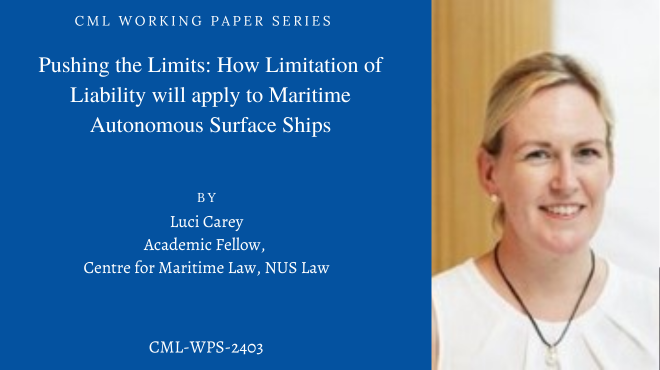Media - News
- Media
- CML Working Paper: Pushing the Limits: How Limitation of Liability Will Apply to Maritime Autonomous Surface Ships
CML Working Paper: Pushing the Limits: How Limitation of Liability Will Apply to Maritime Autonomous Surface Ships

ABSTRACT
The right of shipowners to global limitation has been in place for centuries. The persons entitled to limit have expanded from the shipowner to include the salvor, charterer, manager, and operator of a seagoing ship and any person for whose act, neglect, or default the shipowner or salvor is responsible. Claims brought against these persons can be limited (with some exceptions), with the limits calculated per distinct occasion. Uncrewed ships that are operated remotely and autonomous ships that self-navigate will not necessarily involve the shipowner’s employees; instead, it is likely that independent contractors will monitor a fleet of uncrewed vessels. In addition, artificial intelligence is increasingly used to make navigational decisions on uncrewed vessels and conventional ships. Where there is no human presence onboard, and the ship is monitored by an independent contractor, finding fault of the shipowner will be increasingly difficult to establish for claims covered by the Limitation Conventions.
The paper examines the development of the right to limitation. It considers whether limitation will be available to the operators of remote-operated vessels, identifies difficulties with determining how the limits will be calculated, and the challenge of finding the ‘distinct occasion.’ It concludes that limitation should be available to the operators of remote-operated vessels to ensure that claimants are assured that insurance is in place. It is undesirable that novel categories of ships are excluded from a regime that applies to existing conventional ships.
Download the paper at:
More about the author here.

